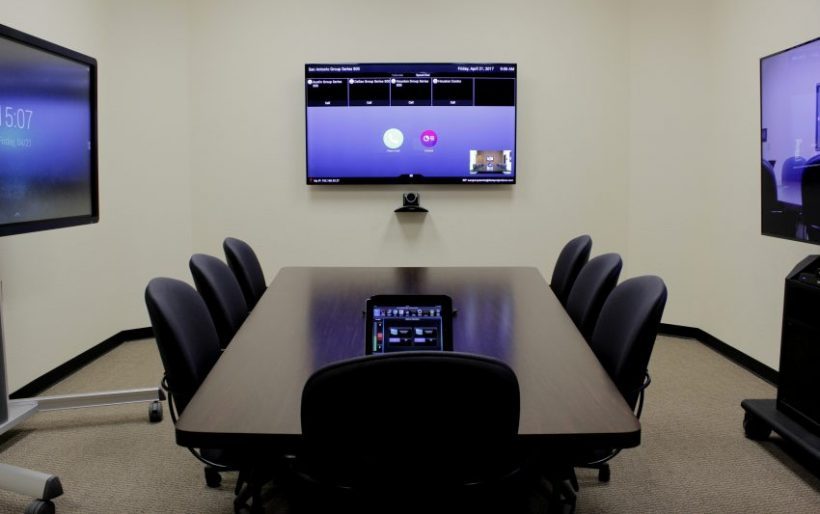What are typical interactive flat panel prices?
Interactive flat panel prices range from a $1,000 to $10,000 or more, depending on the brand and model. The Microsoft Surface Hub 2, for example, costs close to $10,000 or more, while some lesser known brands may produce models that cost significantly less.
For educators, there are several interactive flat panels that are available for reasonable prices. The Promethean ActivPanel and Clevertouch, for instance, both cost between $2,000 and $3,000, depending on the model’s size and features. The cost can go up to $4,000 for an 86” flat panel.
What factors into interactive flat panel prices?
Interactive flat panels are everywhere according to research published by the Canada Research Chair in Educational Technology. Its 2016 technology study found that more than half of U.S. schools already have an interactive whiteboard or flat panel in place, and that number is on the rise. Schools are investing in interactive flat panels even with the considerable cost associated with the technology. That’s because interactive flat panels are an engaging visual aid for students.Schools can also manage the cost of their interactive flat panels by selecting features they need and an AV integrator they can trust. Here’s what can drive the cost of a panel, and what educators should look for:
Quality build and components
There are many interactive flat panel manufacturers in the industry, but only a few of them make flat panels that are suitable for the classroom. Higher quality panels may cost a bit more, but they are reinforced with safety glass and a heavier chassis. This means they are more durable, so schools don’t have to replace the technology as often. It may cost a bit more to purchase a more durable interactive flat panel, but that durability is worth the additional cost in the classroom.
Display size
The bigger the interactive flat panel display, the more it will cost. Sizing a display for the classroom, though, is simple. AV integrators use the 4/6/8 rule to determine how large the display should be.To use the 4/6/8 rule, you need to know how high the display is mounted off the ground, and how far students will be seated away from the display. If the display is mounted four feet off the ground, which is standard, students within four times that distance (16 feet) will be able to read fine details on the display and fully engage in the lesson. If the student is within six times the distance (24 feet), students can read larger fonts and images, which means they can participate in typical classroom activities. At eight times the distance, (32 feet), students can only view the display passively, so they can pay attention to movies, but anything else will be tougher to see.When selecting a display for the classroom, AV integrators prefer to keep viewing distances within six times the display’s mounting height. The proper display size will depend on the room’s size and layout.
Touch features
Interactive flat panels are built on a few primary touch technologies, and they range in their effectiveness and versatility. The more precise and versatile the display’s touch controls, the more the display will cost. Displays that use infrared detection with a pen are the least expensive, but some can only be used with the pen. Boards with electromagnetic technology use a nest of copper wiring to detect changes in magnetism. They are also used with a pen, but one that doesn’t require power to function, so no charging is needed. Several manufacturers make panels that can be used with a pen or finger, and many schools consider this a strong advantage. If the pen is lost, the panel can still be used, and for many users, it’s easier to get comfortable with the panel if they’re using their finger instead. These panels may be designed with infrared or mesh technology.Some schools also prioritize multi-touch technology, as this allows for effective collaboration between students. Displays that utilize multi-touch technology cost a little more, but they allow for more complex activities.
Additional technology
Some interactive flat panels are packaged with other equipment, like a sound bar or additional control or connectivity peripherals. This extra equipment costs more, but it’s not always necessary. An AV integrator will ensure their clients are properly outfitted and make the most cost-effective decisions for the classroom.
Companies can reduce interactive flat panel prices by considering AVaaS
AV-as-as-Service (AVaaS) is an emerging choice in AV for many organizations and schools, as it allows schools to control their AV expenses month-to-month, instead of making occasional, but much larger, investments in their AV technology. With AVaaS, schools still meet with the integrator, determine the best solutions for their needs (which may include an interactive flat panel), design the solution and implement it. Here’s why AVaaS makes sense for organizations investing in an interactive flat panel:
Budget certainty
With month-to-month AV expenses, it’s easier for schools to control their technology budget, so they can make better long-term decisions.
Scalability
Because AVaaS only requires a modest initial investment, schools can integrate new technologies as needed, instead of when large amounts of capital open up.
Expert support
An added advantage of AVaaS is that it comes with long term support, so the integrator acts like the school’s technology partner. This means the integrator will monitor the interactive display’s performance, maintain it and make recommendations when it’s time to replace or upgrade equipment.
Low risk
With a low upfront cost and dedicated expert support, schools risk little by choosing AVaaS when integrating new AV products and services. Budgets aren’t bottomless, so schools must consider interactive flat panel prices carefully, but there are ways to manage those costs. Partnering with an AV integrator can help control costs as well because experienced integrators are experts at optimizing every dollar for their clients’ AV solutions.



